7 Famous Chinese Mid-Autumn Festival Stories & Legends
Also known as Moon Festival and Mooncake Festival, the Mid-Autumn Festival is the second-most important ancient festival after Lunar New Year in China with a history dating back over 3,000 years. In ancient times, it was a ritual rule for emperors to offer sacrifices to the moon in autumn, hoping for the bountiful harvest. As early as in the book "Zhou Li" (1046-256BC), the term "Mid-Autumn" had been recorded. Later, the classes of the nobles and literati followed suit. In Chinese thoughts, the Moon on the 15th day of the 8th lunar month is considered as the brightest and roundest of the whole year. During the night, the folk custom of appreciating and praying to the full Moon began to spread among the common people.
In Tang Dynasty (618-907AD), it became more popular in the country to worship the moon on this specific date. Then the Mid-Autumn Festival came into being. In the historic books of Tang Dynasty, it mentioned the "August 15, Mid-Autumn Festival". In the following Song Dynasty, the Mid-Autumn Festival has become one of the main festivals in China. There are many myths, legends and stories about the Mid-Autumn Festival in history like Chang'e flying to the moon, Wu Gang cutting the osmanthus tree, and the jade rabbit pounding medicine, etc.
Mid-Autumn Festival story 1: Chang'e Flying to the Moon (嫦娥奔月)
Actually there are 4 or 5 versions of legends about Chang’e. Mostly spread and accepted one is that Chang'e had to take the immortal elixir that her husbad Hou Yi obtain from Heavenly Empress of the West, as the student of Hou Yi – Pang Meng tried to force Chang’e to hand the elixir in to him when Hou Yi was out. Then she flew to the Moon Palace after that. But in the palace of the Moon, Chang’e feels empty and lonely and misses her husband.
Later, Chang'e confided in her husband about her regret and said: "Tomorrow when the moon is full, you can use flour to make round cakes like the moon, and place them in the northwest of the house, and keep calling my name. Then I will have the chance to come home.”
The next day, Hou Yi did as what his wife had told, Chang'e flew back from the moon at midnight, and the couple were successfully reunited. It is said that the custom of making mooncakes during the Chinese Moon Festival originated from this.
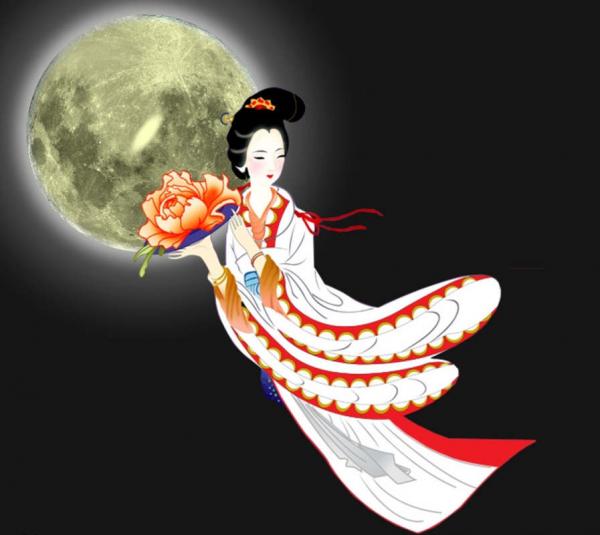
Mid-Autumn Festival story 2: Wu Gang Cutting Osmanthus Tree (吴刚伐桂)
Legend has it that there is a 1500-meter-high osmanthus tree on the moon. Until in Tang Dynasty, a figure called Wu Gang was integrated into a story of the magic tree. He was a Taoist who wanted to achieve his goal of being an immortal, but he killed the grandson of the Sun God due to the adultery with his wife. Then he was banished to the moon to chop down the magic tree there as punishment, while this is a self-healing tree, he can never cut it down. The idiom of Wu Gang Cutting Osmanthus Tree is often used to describe the endless toil in Chinese language, like the story of Sisyphus rolling a boulder up a hill in Greek mythology.
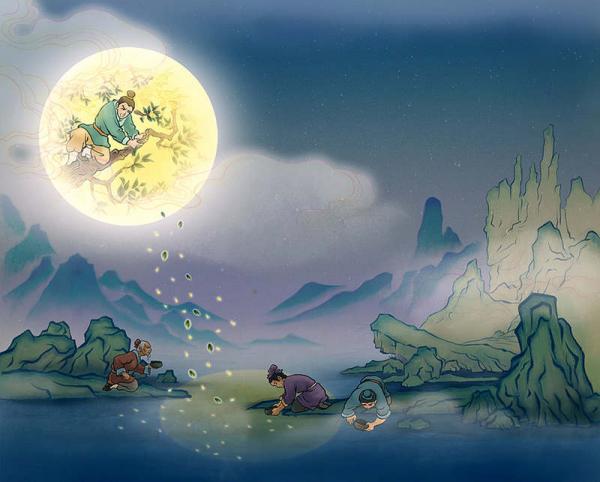
Mid-Autumn Festival Story 3: Rabbit Pounding Herbs (玉兔捣药)
In Chinese legend, a white rabbit also lives in the palace of the moon as the companion of Chang’e. She is so white that Chinese people name it “Jade Rabbit”, which also refers to the moon as a metaphor in some ancient poems. This rabbit’s work is to hold a jade pestle, kneels down and pounds the herbs to make an elixir of immortality.
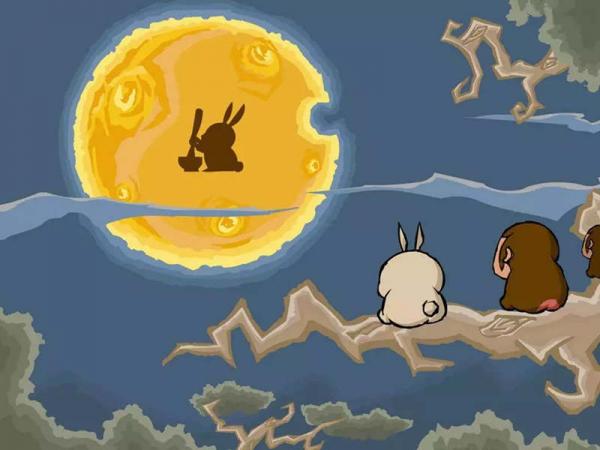
Mid-Autumn Festival Story 4: Xuanzong's Moon Tour (玄宗游月)
According to a Chinese legend, during the Mid-Autumn Festival, Emperor Xuanzong of the Tang Dynasty, Taoist Master Shen and another Taoist priest appreciated the moon in the courtyard. Suddenly Emperor had the idea of visiting the moon palace, so the master practiced the Taoist magic to make three of them fly up to the sky and roamed around the moon palace together. However, the palace was heavily guarded, and they could not enter. Before they decided to leave, a piece of heavenly music suddenly floated out from the palace and stopped them. Emperor Xuanzong has been particularly keen on music, so he tried to keep the tune in his mind. After going back, the Emperor recalled the music from the Moon Palace, and recomposed it and choreographed the dance accordingly. This is the famous "Melody of White Feathers Garment" in history.
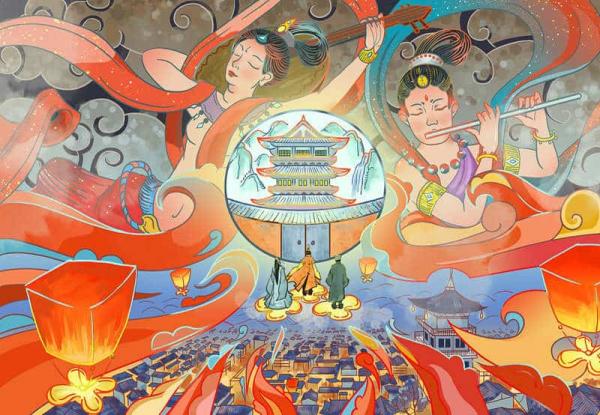
Mid-Autumn Festival Story 5: Diao Chan Worships the Moon (貂蝉拜月)
Diao Chan has been regarded as one of the four most beautiful women in history of China. She is the wife of Lü Bu, a handsome and fearless general of Eastern Han Dynasty (25-220 AD). It was said that Diao Chan prayed to the moon at midnight, even Chang'e felt ashamed of her own appearance, and hurriedly hid the moon behind the clouds. Actually unlike other 3 most beautiful ladies in history, Diao Chan was not recorded in the official historic books. She was first mentioned and probably a created role in the dramas of Yuan Dynasty (1274-1368).
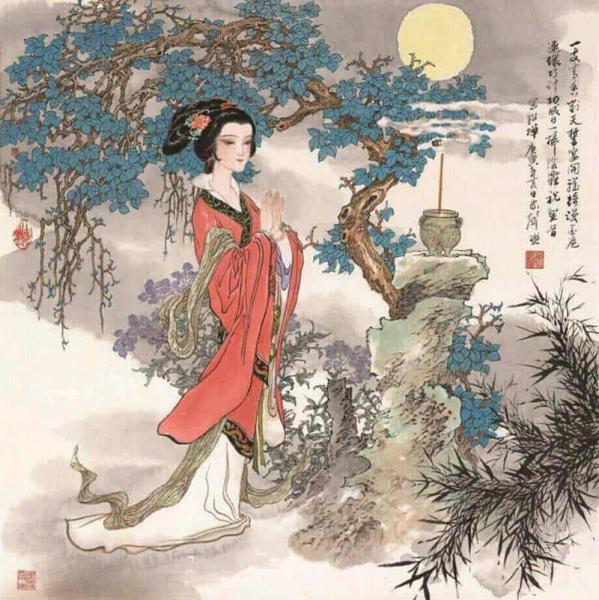
Mid-Autumn Festival Story 6: Li Bai Drinking Alone under the Moon (月下独酌)
The greatest poet in Chinese history - Li Bai of Tang Dynasty described a specific occasion in his poem when he was drinking alone in courtyard under the moon: “To invite the moon I raise my cup. We're three, as my shadow shows up”. Literally in the poem, Li Bai was really enjoying himself. But deep in this mind, he hid his endless isolation. Later in his life, it became even harder to find a good friend to drink with him. This means he obviously had negative attitudes toward corruption and social snobbery in the officialdom at that time.
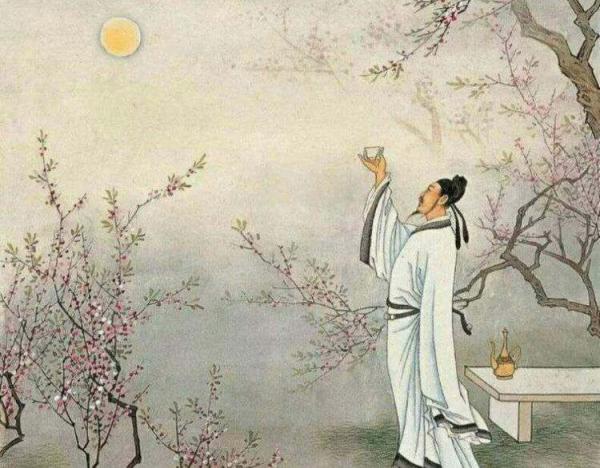
Mid-Autumn Festival Story 7:The Mooncake-Signaled Uprising (月饼起义)
Legend has it that during the late Yuan Dynasty, Zhu Yuanzhang (first emperor of Ming Dynasty), in collaboration with various rebel forces, planned a military operation. They secretly inserted slips of paper with the message "Rebellion on the 15th of August" into the cakes to send out the signal for the uprising. After the rebel army successfully launched an offensive and overthrew the Yuan Dynasty's rule on the night of the Mid-Autumn Festival, Zhu Yuanzhang designated these cakes as the official Mid-Autumn Festival rewards and named them "mooncakes". He also stipulated that officials were required to enter the palace to receive the mooncakes on this day.
>> Top 9 Peasant Revolts in Ancient China
Leave us a comment to share other Chinese Mid-autumn festival legends, stories and festivals.
Further Reading:


